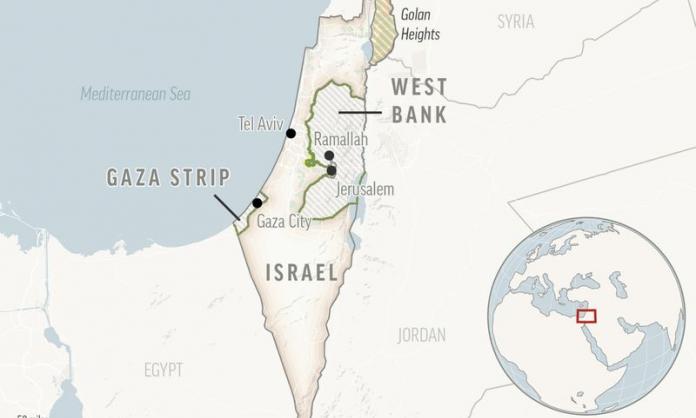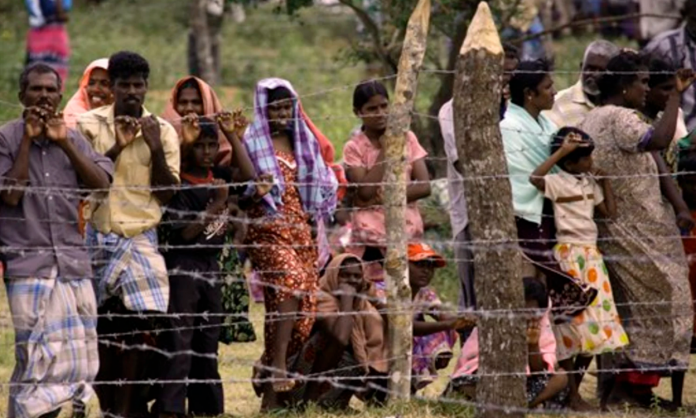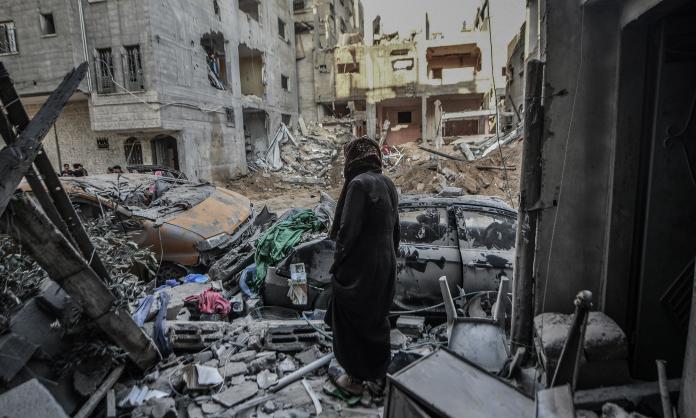Israeli Prime Minister Benjamin Netanyahu has issued a chilling warning to Palestinians after Hamas launched a surprise operation against Israel on Saturday: “I say to the residents of Gaza: leave now because we will act forcefully. All the places where Hamas is deployed, hiding, and operating, we will turn into islands of rubble”.
Palestinian fighters from the Gaza Strip entered Israel under the cover of rockets launched from the besieged enclave. Unprecedented scenes followed. Part of the militarised border fence along the periphery of Gaza was bulldozed. Palestinian civilians commandeered Israeli military vehicles, and fighters stormed at least one military base. Videos of dead Israeli soldiers and live Israeli hostages soon flooded social media.
In the face of the biggest assault on the occupation since at least the 1973 Arab Israeli War, Israel has responded with full force, cutting off Gazans’ access to food, fuel and electricity. Gaza has been hit with airstrikes as thousands of Israeli soldiers descend upon the territory, raising fears of a ground invasion.
But while there is much talk about a new war, and fingers are pointed at Hamas for starting it, the reality is that Israel has for decades been waging a permanent war against the Palestinians.
The Gaza Strip is the world’s largest open-air prison. More than 2 million Palestinians live on a piece of land many times smaller than the size of Melbourne. Israel blockades the territory by land, sea and air. It restricts the entry of food to what is deemed “essential for the survival of the civilian population” and restricts the movement of people to “exceptional humanitarian cases”.
Ninety-seven percent of Gaza’s water is contaminated. Residents are forced to live on little electricity because Israel has repeatedly damaged the sole power plant on the Strip. More than 60 percent of residents live in poverty, and more than 80 percent of the population depend on international assistance.
It is Israel’s concentration camp.
Gaza is the rump of territory where victims of the Zionist campaign to ethnically cleanse Palestine in 1948 ended up. Seventy-five percent of Gazans are refugees from the coastal and southern regions of Palestine. In June 1967, Israel seized the Gaza Strip from Egypt and has retained military control over the enclave ever since.
The experience of internal displacement and horrific living conditions has pushed Gazans to resist. The Palestinian Communist Party was born in the besieged enclave in the 1950s, followed by Fatah in the late 1960s, and Hamas and the Palestinian Islamic Jihad more recently.
Israel met the growing resistance with an iron first. After the eruption of the First Intifada in 1987, Israel imposed restrictions on Gazans, establishing a permit system to gain access to work in or travel to Israel. Palestinians were largely denied access to the Occupied Territories, the West Bank and East Jerusalem. In response to the Second Intifada in 2000, Israel cancelled most of the travel and work permits in Gaza, severing the sole avenue of income for many.
During the 1990s Israel ramped up its “closure” tactics, trapping Palestinians in restricted areas for up to months at a time. The occupation tightened the screws by building an electronic fence and a concrete wall around the enclave. Military checkpoints with remote controlled machine guns and cameras sit atop the 65-kilometre border separating Gaza from Israel, positioned to shoot and kill any Palestinians who attempt to breach it.
Then came the bombs. In 2008, a 22-day bombardment left 1,140 Palestinians dead and flattened 47,000 homes. In 2012, Israel incinerated schools, mosques, cemeteries, and health and media institutions in a missile attack. Two years later, Israel again set Gaza alight, slaughtering 2,100 Palestinians and forcing more than half a million to flee their homes.
In May 2021, a devastating eleven-day military offensive besieged the enclave, killing at least 260 and demolishing thousands of residential units. During the reconstruction process, Israel prevented the entry into Gaza of essential material needed to rebuild homes.
The Gaza Strip is now, again, under attack. Netanyahu has declared war and members of Israel’s parliament have publicised calls for “a new Nakba” (“catastrophe”)—the Palestinian word used to describe the process of ethnic cleansing carried out by Zionist forces in the lead-up to the founding of Israel.
Survivors of the 1948 invasion and colonisation of Palestine say that the Nakba never ended. In a recent interview with Al-Jazeera, 89-year-old Hassan-al-Kilani said:
“I always compare my father’s life as a young man and our life before Nakba and the openness and ease we used to live in with the lives of today’s youth in Gaza. I feel sorry for them ... these youths are facing the catastrophe of losing the future.”
For 75 years, Palestinians have been blockaded, invaded and bombed by Israel. The occupation controls every chemical compound that enters the Strip and counts every calorie that goes into Gazan mouths. Palestinians are expected to endure repeated bombardments, forced starvation and entrenched poverty as if it were normal, and not a deliberate policy of Israel’s settler-colonial project.
Overnight, Amer Ashour took his pregnant wife to hospital as she prepared to give birth. Little did he know he would return to find his home flattened after his apartment building in al-Nasr, a neighbourhood in Gaza City, was bombed.
“I was worried about how we would get to the hospital in light of the continuous bombing”, he told Al Jazeera. “But I did not expect that my house would be bombed.” Eighty families lived in Ashour’s apartment building. Today, all of those families are homeless.
For Palestinians, everyday life in the Gaza Strip is a continuation of the Nakba.







